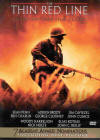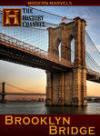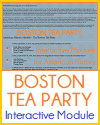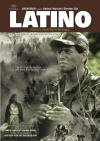The Alamo (2004) |
| www.studenthandouts.com > U.S. History > Westward Expansion > Books and Films |
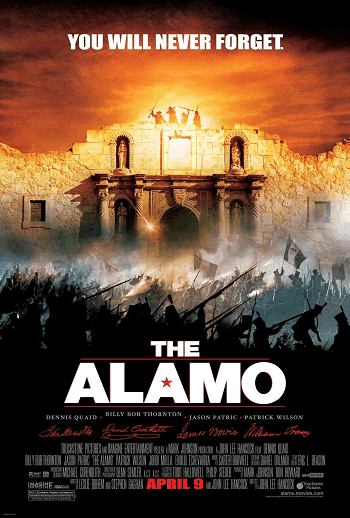 Length: 137 minutes (2 hours, 17 minutes)
Length: 137 minutes (2 hours, 17 minutes)Age appropriateness: The Alamo is rated PG-13 in the United States. There is no sex, and very little profanity. Violence is limited to the warfare that is the subject of this film. Creators and stars: Afemo Omilami, Billy Bob Thornton, Blue Deckert, Brandon Smith, Castulo Guerra, Craig Erickson, Dameon Clarke, Dennis Quaid, Edwin Hodge, Elena Hurst, Emilio Echevarria, Emily Deschanel, Estephania LeBaron, Flavio Hinojosa, Francisco Philbert, Jason Patric, Joe Stevens, John Lee Hancock, Jordi Molla, Kevin Page, Laura Clifton, Leon Rippy, Leslie Bohem, Marc Blucas, Mauricio Zatarain, Nathan Price, Nick Kokich, Patrick Wilson, Ricardo Chavira, Robert Prentiss, Stephen Bruton, Stephen Gaghan, Steven Chester Prince, Tom Davidson, Tom Everett, Tommy G. Kendrick, Turk Pipkin, W. Earl Brown Accuracy: This 2004 version of the story of the Alamo is the most accurate telling to date. Minus Davy Crockett (who was more of a braggart in real life), the remaining principal characters--Antonio Lopez de Santa Anna, James Bowie, Sam Houston, and William Barret Travis--are portrayed as they were in real life. This is not based on legends, but on history. Review: The Alamo is a difficult movie to review because it possesses so many good historical and cinematic qualities, while it portrays a battle that is dear to so many--a battle that was part of a conflict that still divides people today. In the early 1800s, white American settlers began moving into Texas, then part of Mexico. White American settlers soon outnumbered Mexicans in Texas, and the Mexican government sought to limit immigration into the area. The 1824 Mexican Constitution established Catholicism as the official religion of Mexico, outlawing the Protestantism practiced by most of the white settlers. Additionally, slavery was illegal in Mexico; many of the white settlers migrated from the American South, bringing their slaves with them. When Santa Anna became a dictator after winning election to the Mexican presidency in 1833, the time was ripe for a revolution in Texas. This revolution lasted from October 2, 1835, until April 21, 1836. The Alamo presents two important events in the Texas Revolution--the Battle of the Alamo (February 23-March 6, 1836) and the Battle of San Jacinto (April 21, 1836). Historically, in the United States (and especially in Texas), men like Davy Crockett, James Bowie, Sam Houston, and William Barret Travis were portrayed as all-American heroes, while Santa Anna was reviled. Additionally, the issues of slavery and the mixed feelings of ethnic Mexicans were ignored. As historians began to take a more objective approach to these men and events in the late 19th century, the portrayal of men like Sam Houston as champions of liberty came into question. Making a modern film about the Alamo, then, posed a great dilemma. How can a film attract traditionalists--the type of people who are most likely to go to a movie theater to watch a two-hour movie about the Alamo--while remaining true to the historical record? Would people pay to see their idols brought down to the level of mere mortals, presented as complex and flawed human beings? Would moviegoers cheer the ultimate victory of men who were fighting, in part, for the right to own slaves? The answer was sadly, for the filmmakers, no. The film has earned back less than a quarter of its nearly $100,000,000.00 budget. The failure of The Alamo at the box office is a shame because it really is a beautifully crafted, terrifically acted film. Although a lot of the preliminary background could have been cut (the actual battle does not take place until about an hour and forty minutes into the film), viewers really get a feel for what it was like in Texas for all walks of life at the time. And the battle itself is no low-budget reenactment. It seems like the film crew built an exact replica of old San Antonio, which is filmed from numerous directions. You see hundreds and hundreds of Mexican soldiers in full regalia. It's simply breathtaking. Best of all, this film is amazingly true to the historical record (minus the death of Davy Crockett, whose real end has been a matter of controversy for half a century). Representative characters display the diverse points of view of those with a stake in the outcome--slaves who will be freed if the revolution fails, ethnic Mexicans who want to be free of Santa Anna's dictatorship, ethnic Mexicans who fear being a minority in an independent Texas, and white settlers who want to start their own country. |
| Miscellaneous: While most adults are familiar with names like Davy Crockett and Sam Houston, most teenagers (except perhaps those raised in Texas) are not. This film assumes that viewers already know who these people are. Therefore, before watching this movie in class, it is advised that teachers give an introduction to the principle characters and the background of the Texas Revolution. Click here to enlarge the film poster. Discussion and review questions: (1) Take notes on each of the following characters as you watch the film: Antonio Lopez de Santa Anna, David Crockett, James Bowie, Juan Seguin, Sam Houston, and William Travis. (2) Who became president of Mexico in 1833? (3) Describe the structure of the Alamo. (4) What two men shared command of the Alamo? (5) What weapons are used by each side? (6) What incentive is there for slaves to side with Santa Anna and the Mexican army? (7) Why are so few reinforcements sent to defend the Alamo? (8) Why is taking the Alamo important to Santa Anna? (9) Describe the events of the Battle of the Alamo. (10) What military strategy does Sam Houston use to defeat Santa Anna? (11) Imagine that you are an ethnic Mexican living in San Antonio at this time. Which side would you support? Does your opinion change if you are a white settler? What about if you were brought to Texas by white settlers as a slave? Explain your answer. (12) On a map, locate the following: (a) San Antonio, Texas, (b) San Jacinto, Texas, and (c) Mexico. Vocabulary terms: Anglos, attack, battery, Battle of the Alamo, Battle of San Jacinto, bombardment, charge, defend, dictator, independence, Mexico, mission, reinforcements, San Antonio, slavery, Texas Revolution, Texians |
 |
|---|
| www.studenthandouts.com > U.S. History > Westward Expansion > Books and Films |
| The Alamo Movie Review Publication Date for Citation Purposes: July 12, 2012 |


